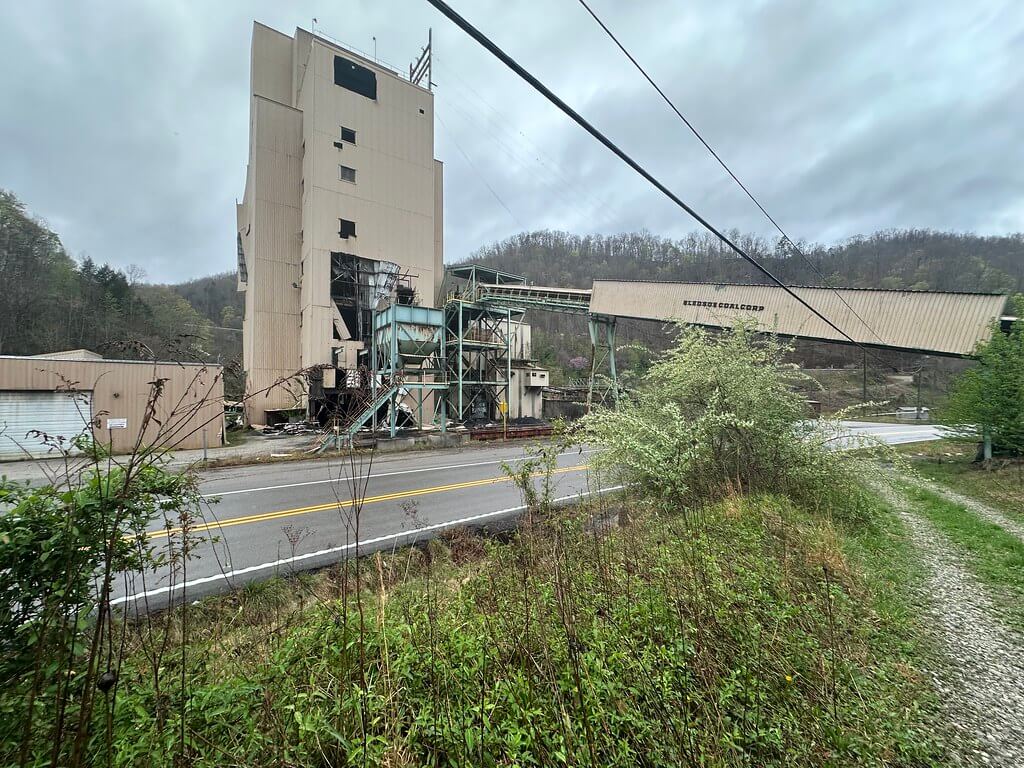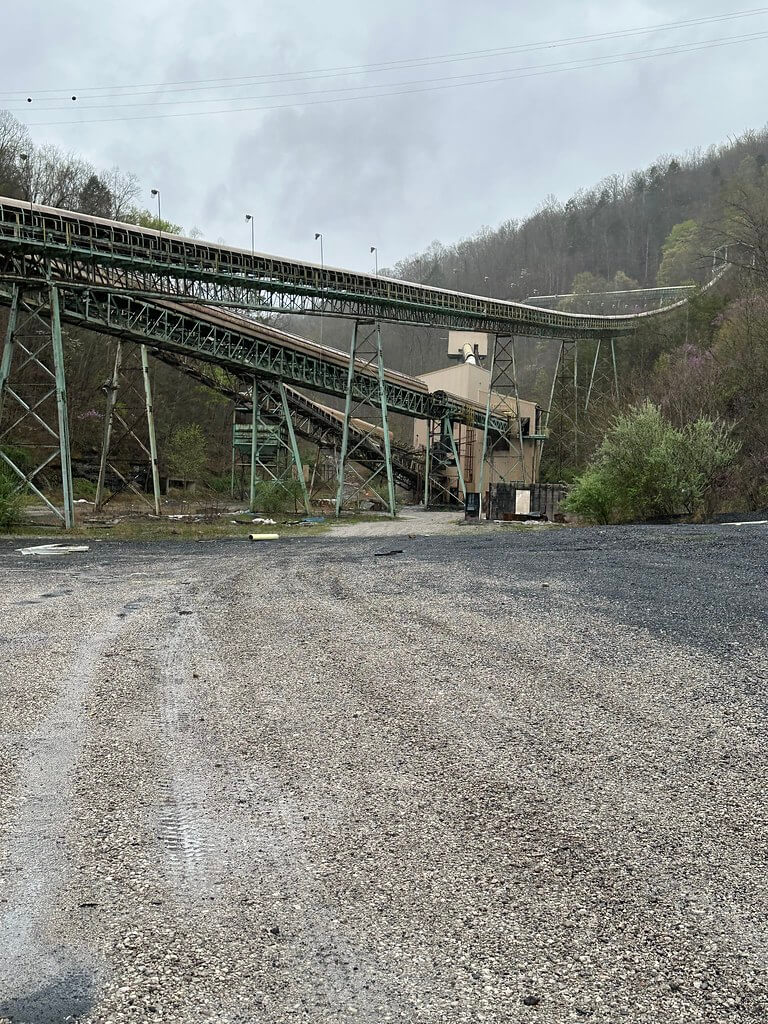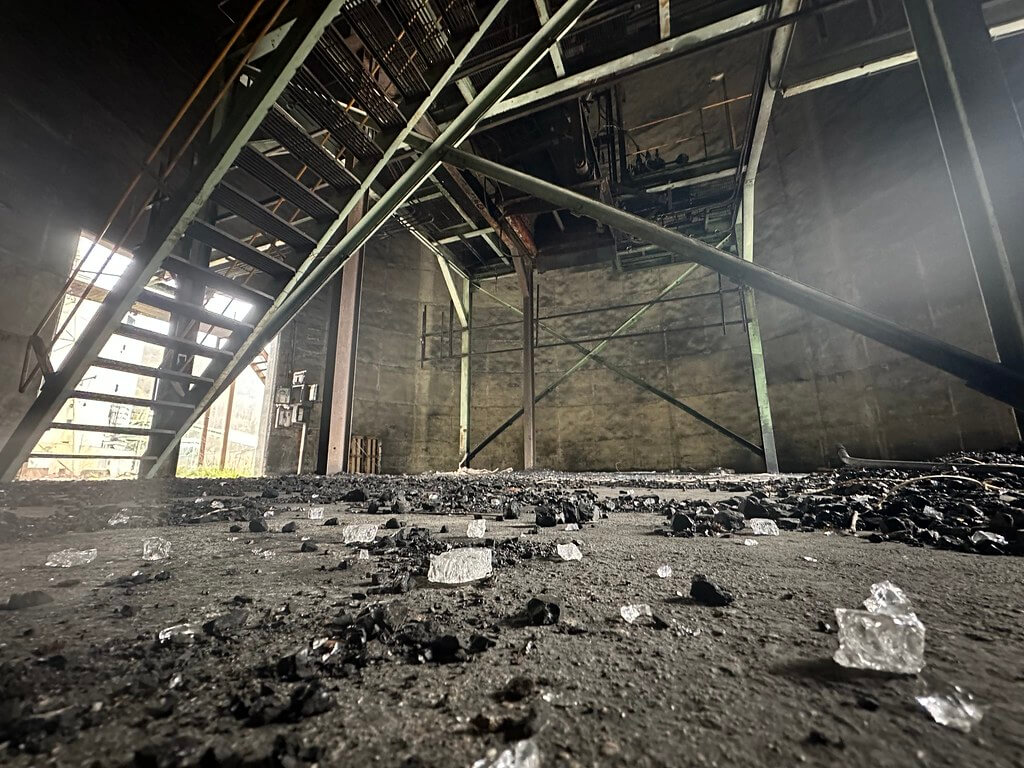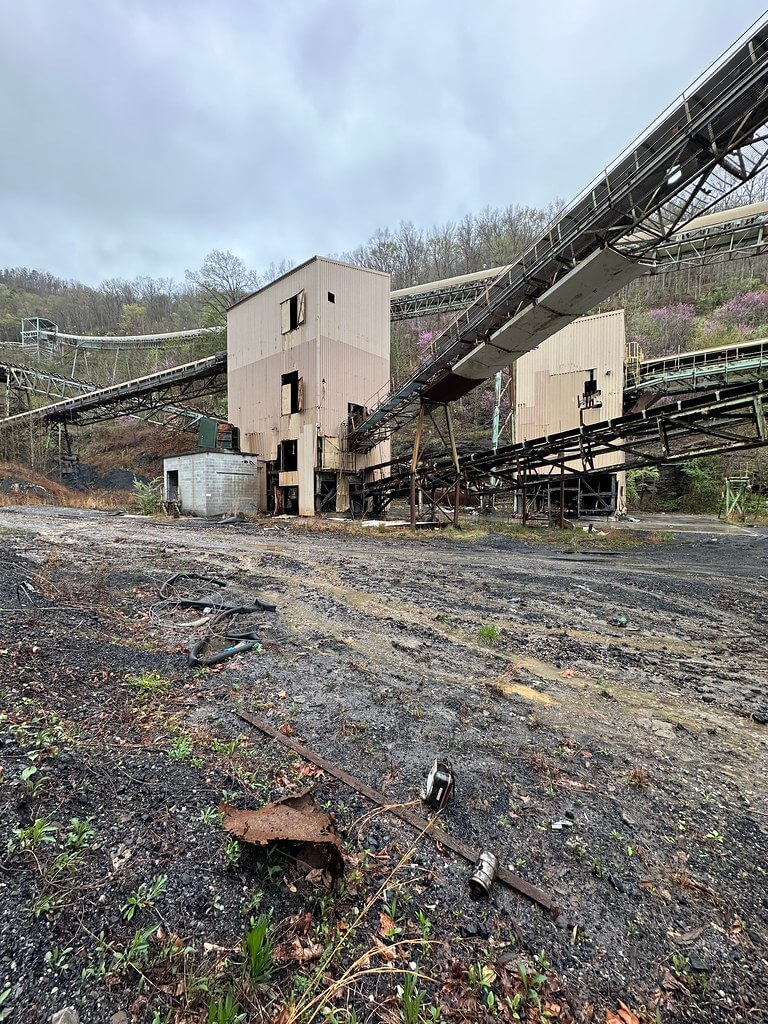Abandoned Appalachia Series – Bledsoe Mining Company

Introduction
Bledsoe Mining Company, later Bledsoe Coal Corporation, sat in eastern Kentucky’s hills. It once anchored the local economy. Its headquarters were in London, Kentucky, with mines in rural Leslie County. For hundreds of families, Bledsoe meant livelihood. The company’s story mirrors Appalachia’s: extraction brought jobs, but also environmental and safety scars. Today the site sits silent, emblem of the region’s broader struggles.
Founding and Ownership
Bledsoe Coal Corporation incorporated in 1976. In the early 1980s, it opened underground mines in Hazard seams near the Leslie–Harlan–Letcher county lines. James River Coal bought Bledsoe and nearby Leeco mines in June 1995, expanding its eastern Kentucky portfolio. Expansion continued in 1999 when James River bought Shamrock Coal. The deal added mines, a prep plant, and the Clover rail loadout. By 2000, Bledsoe was vital to James River’s eastern Kentucky division. It shipped premium bituminous coal to Southeastern power plants.

Daily Life Underground
Bledsoe’s miners specialized in underground room and pillar extraction. Working the Hazard coal seams, like the Hazard №4 and adjacent rider seams, crews operated continuous miner machines that cut tunnels through the dark rock. On a strong year, production from a single mine portal like Mine №4 could top half a million short tons of coal. At times, Bledsoe employed over a hundred underground workers per site, fueling the county’s economy. Coal hauled by truck from these portals was processed and then shipped through the Clover loadout, eventually winding up in power plants as far south as Georgia. In 2011, over 75% of Leslie County’s coal exports ended up at Georgia’s Harllee Branch and Bowen power stations, underscoring the broad reach of these Appalachian mines.
Economic Lifeline in Leslie County
For decades, coal was one of the only major industries in this rural Appalachian enclave. With a population of just over 10,000, Leslie County depended on mines like Bledsoe as a stable source of jobs and tax revenue. Workers from towns such as Helton, Chappell, and Big Laurel clocked in for shifts that kept the lights on, both at home and across the Southeastern grid. By 2011, the county had about 18 active coal mine sites employing close to 900 full time miners in total; Bledsoe alone accounted for around 90 to 100 of those roles in its underground operations. As in many Appalachian coal towns, the company’s payroll was a crucial source of both wages and local business activity.

A History of Safety and Regulatory Battles
As with many mines in the region, safety incidents occasionally marred Bledsoe’s record. In March 2009, an abandoned underground section near Chappell experienced a blowout, releasing thousands of gallons per minute of mine water into a nearby creek, fortunately causing no injuries but raising questions about mine seals and flood prevention.
Tragedy struck in January 2010 when a 29 year old miner, Travis G. Brock, lost his life in an underground “rib roll” collapse, where a massive chunk of coal and rock fell from the side (the “rib”) of the mine. A federal investigation blamed poor roof and rib support, citing Bledsoe’s operator for “aggravated conduct” and issuing substantial fines.
By 2011, Bledsoe’s Abner Branch Rider Mine drew intense scrutiny from the Mine Safety and Health Administration (MSHA). The mine racked up numerous violations involving roof control, coal dust accumulations, and ventilation. In a historic move, MSHA designated Abner Branch as the first mine under the “Pattern of Violations” (POV) status under strengthened enforcement rules, meaning any repeat infraction could trigger an immediate closure order. This designation signaled the mine’s “chronic and persistent” safety problems and put Bledsoe at the forefront of public debates on miner protection and regulatory enforcement.
Market Collapses and the End of an Era
Despite the scrutiny and periodic improvements, a broader crisis loomed for the entire coal sector. By the early 2010s, U.S. power plants were increasingly shifting to natural gas, driving down demand for Central Appalachian coal. Prices, which had soared in the late 2000s, dropped precipitously, falling from around $130/ton to below $60/ton by 2013. At the same time, stricter environmental regulations on both mining practices and power plant emissions squeezed margins further. James River Coal, heavily invested in Appalachian deep mines, struggled to stay afloat. By 2014, the parent company filed for Chapter 11 bankruptcy.
Some James River assets found new buyers, others sat idle, awaiting an upswing that never truly arrived. Revelation Energy (and its affiliate, Blackjewel LLC) briefly tried to revive parts of the “old Bledsoe” complex around 2015 under the name “D 2 Beechfork Mine,” but these efforts were short lived. Blackjewel declared bankruptcy in 2019, prompting an abrupt shutdown and layoffs that echoed across multiple coal counties in Appalachia.

Legacy and Lessons
Today, the Bledsoe mine sites in Leslie County lie mostly idle, with reclamation tasks and water-treatment obligations lingering amid financial uncertainties. For the local community, Bledsoe’s story is bittersweet. The mines once delivered dependable paychecks and economic stability, yet also brought health, environmental, and safety risks. Bledsoe’s downfall mirrored a wider Appalachian narrative in which the coal industry’s retreat. Leaving behind depleted communities, unresolved controversies, and lessons about long-term sustainability.
Still, many former Bledsoe workers remain proud of their time underground. Their stories speak to the deep traditions of mining in Appalachia, reminding us that “coal camp” life was never just about dollars and cents. It was about family heritage, grit, and the collective sense of sacrifice to keep the lights on across America.
Moving Forward
In the wake of Bledsoe’s closure, questions remain: What can Appalachia’s coal counties do to rebuild or transition economically? Who shoulders the responsibility for environmental cleanup and long-term water monitoring? And how do former miners find opportunities in places where coal jobs have vanished?
These questions will guide future chapters of Abandoned Appalachia. As the region grapples with a post-coal identity, the story of Bledsoe Mining stands as a cautionary tale. It stands as a testament to the resilience of Appalachia’s communities.
Sources & Further Reading
U.S. Securities and Exchange Commission. “James River Coal Company — Prospectus (Form S-1/A).” May 23, 2005. https://www.sec.gov/Archives/edgar/data/1297720/000114544305001220/d17147.htm
Kentucky Energy & Environment Cabinet. Kentucky Coal Facts, 12th Edition (2011–2012).https://eec.ky.gov/Energy/Coal%20Facts%20%20Annual%20Editions/Kentucky%20Coal%20Facts%20-%2012th%20Edition%20%282011-2012%29.pdf
MSHA. Report of Investigation: Abner Branch Rider Mine (Bledsoe Coal Corp.) — Travis G. Brock. Jan. 22, 2010. https://www.msha.gov/sites/default/files/Data_Reports/Fatals/Coal/2010/ftl10c02.pdf
Kentuckians For The Commonwealth (KFTC). “Mine Blowout in South Central Leslie County.” Mar. 28, 2009. https://kftc.org/blog/mine-blowout-south-central-leslie-county
U.S. Energy Information Administration (EIA). “Spot coal price trends vary across key basins during 2013.” Today in Energy, Jan. 2014. https://www.eia.gov/todayinenergy/detail.php?id=14631
Reuters. “James River Coal files for bankruptcy protection.” Apr. 7, 2014. https://www.reuters.com/article/business/james-river-coal-files-for-bankruptcy-protection-idUSBREA361WJ/
West Virginia Public Broadcasting. “Blackjewel Miners Block Railroad to Demand Pay.” July 2, 2019. https://wvpublic.org/government-politics/2019-07-02/blackjewel-miners-block-railroad-to-demand-pay
Global Energy Monitor (GEM). “D-2 Beechfork Coal Mine.” https://www.gem.wiki/D-2_Beechfork_Coal_Mine
Author’s Note: This is one of my favorite places I have visited because so much of the old infrastructure is still standing. If you go, please be careful. Respect posted signs and private property, watch for unstable ground and structures, and avoid entering any tunnels or buildings without permission. Conditions can change fast, so go with a partner, bring proper gear, and leave everything as you found it.